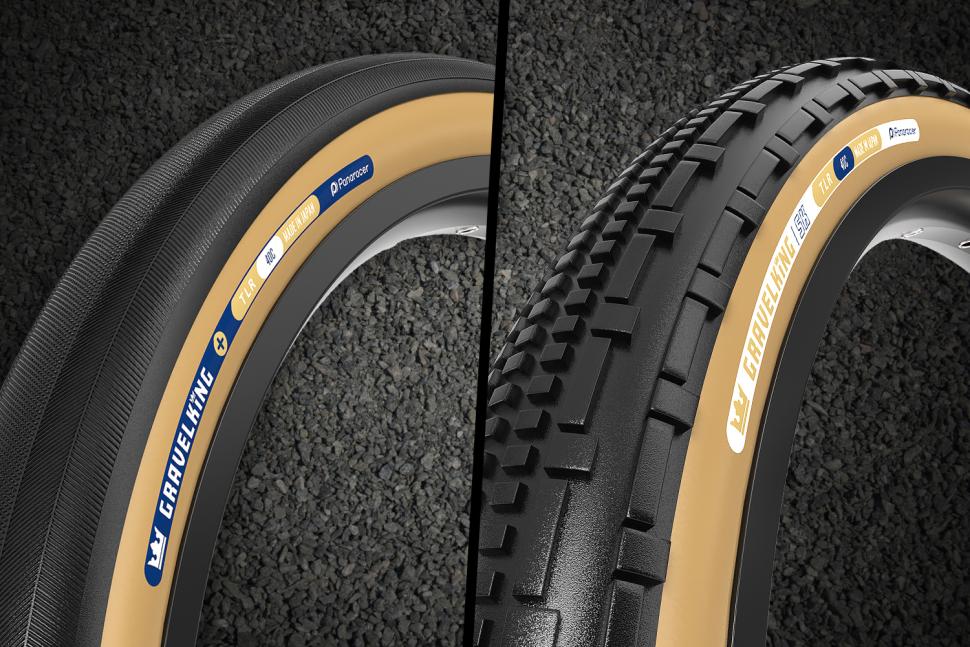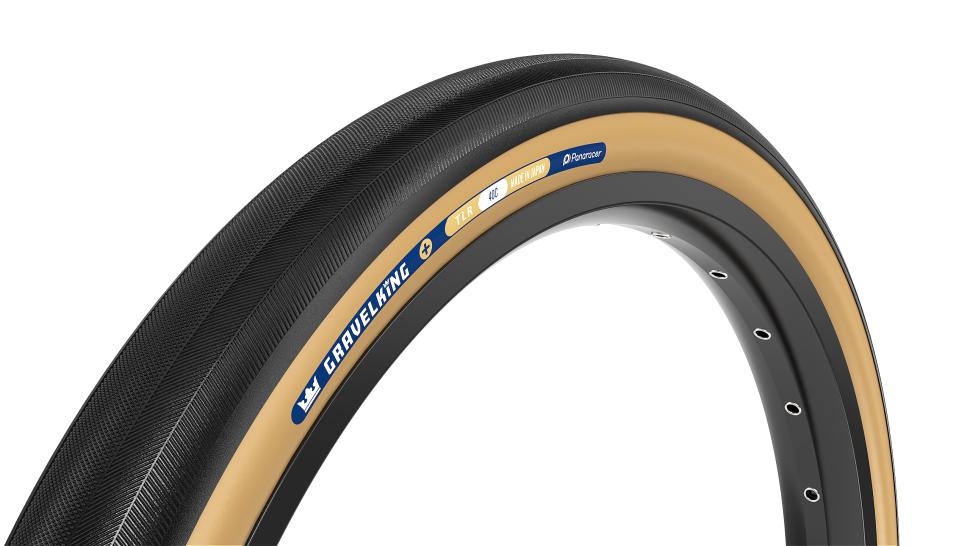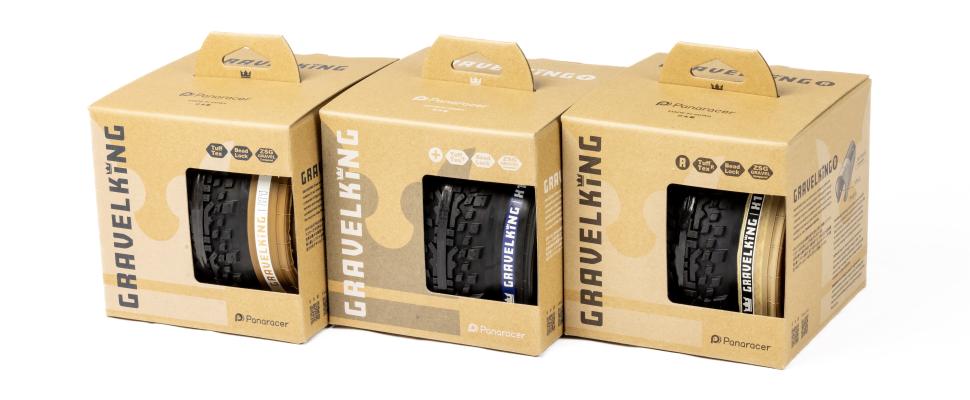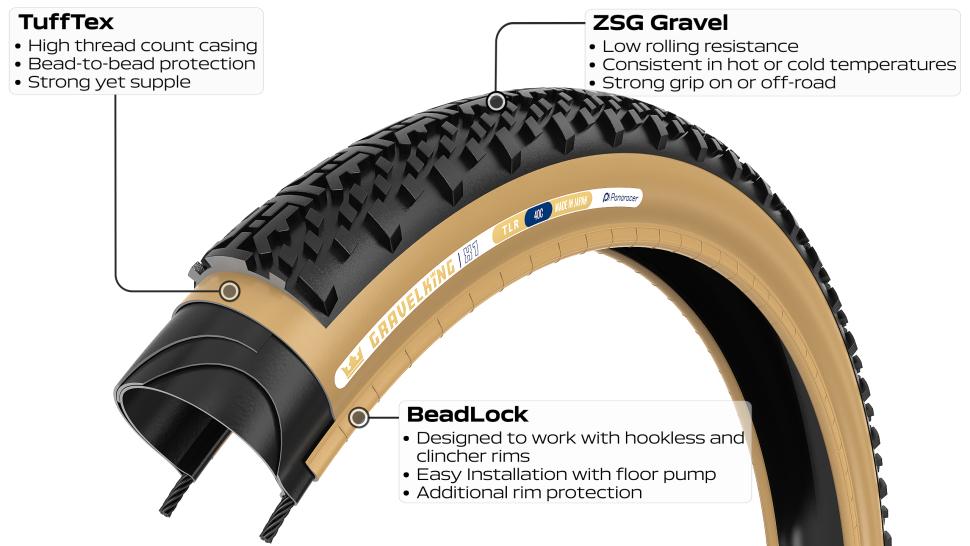- News
- Reviews
- Bikes
- Components
- Bar tape & grips
- Bottom brackets
- Brake & gear cables
- Brake & STI levers
- Brake pads & spares
- Brakes
- Cassettes & freewheels
- Chains
- Chainsets & chainrings
- Derailleurs - front
- Derailleurs - rear
- Forks
- Gear levers & shifters
- Groupsets
- Handlebars & extensions
- Headsets
- Hubs
- Inner tubes
- Pedals
- Quick releases & skewers
- Saddles
- Seatposts
- Stems
- Wheels
- Tyres
- Tubeless valves
- Accessories
- Accessories - misc
- Computer mounts
- Bags
- Bar ends
- Bike bags & cases
- Bottle cages
- Bottles
- Cameras
- Car racks
- Child seats
- Computers
- Glasses
- GPS units
- Helmets
- Lights - front
- Lights - rear
- Lights - sets
- Locks
- Mirrors
- Mudguards
- Racks
- Pumps & CO2 inflators
- Puncture kits
- Reflectives
- Smart watches
- Stands and racks
- Trailers
- Clothing
- Health, fitness and nutrition
- Tools and workshop
- Miscellaneous
- Buyers Guides
- Features
- Forum
- Recommends
- Podcast
 Panaracer GravelKing 10th anniversary April 2024 v2
Panaracer GravelKing 10th anniversary April 2024 v2The world’s mightiest gravel tyre celebrates its 10th anniversary — learn all about the iconic Panaracer GravelKing range

This article includes paid promotion on behalf of Panaracer
One of the most popular business books of the last 20 years is ‘Small Giants’ – a collection of profiles of 14 remarkable companies that, the book says: ‘chose to be great instead of big’. We’re not short of such companies in cycling, but it’s fair to say that one of the greatest of our ‘small giants’ is legendary tyre manufacturer Panaracer.
“Although we started out as an offshoot of Japanese tech giant Panasonic – we’re not part of the Panasonic stable any more – Panaracer has never been particularly well funded or well supported at a corporate level, so we’ve had to be really flexible in the way we looked at the market,” Panaracer’s ‘Global Go-To Guy’ Jeff Zell tells us.
“At Panaracer, we have a total of just 100 employees, and 75 of those people work in manufacturing. I am the only person in the company who isn’t Japanese and who isn’t based in Japan.
“So we have never been in a position to compete with brands like Continental or Maxxis. Those brands have car tyre divisions and lots of manufacturing. But despite that, people see Panaracer as being bigger than we actually are.”
White goods to ride goods
There’s good reason for Panaracer’s respected status. Over the last 72 years, the company has consistently found, developed and promoted emerging trends in cycling. And while other brands may have later benefitted from Panaracer’s initial innovation, those iconic breakthrough Panaracer products are still easy to find in almost every area of pedal power.
“Back in the 1960s, the Panaracer factory was primarily used to produce rubber parts for things like rice cookers and refrigerators – all of the electronics and home goods that Panasonic was really starting to really develop at that time,” Jeff says.
“Somebody in the company realised there was also a good opportunity to make bicycle tyres. The business in home appliances and home stereos was going well for Panasonic, so they looked at exporting products in a different way, and in the 1960s Panaracer developed the first nylon bead clincher tyre.”
The tyres were well received and – because the exchange rate for Western customers was so good due to the weak Japanese yen – people in Europe and the United States were able to buy Panaracer products more cheaply than those from other manufacturers. Then, as product quality quickly became better, Panaracer started to garner the attention of Western companies, not least Schwinn in the later 1960s and 1970s.
Panaracer’s reputation also spilled over into the pro peloton, with the sponsorship of the Panasonic race team and a list of other professional race teams in the 1970s, '80s, ’90s and into the new millennium.
Heading to the hills
But, for all Panaracer’s road bike tyre quality, the company’s first step towards true legendary status happened in 1985 with the Khartoum tyre, one of the first wide tyres that could be fitted to the types of newsboy bikes and cruisers being taken off-road by the path-finding band of founding mountain bikers.
“It put Panaracer at the forefront of what became mountain biking,” Jeff says.
“Then Panaracer followed the Khartoum with the Smoke tyre in 1989 and then the Dart tyre. Those products put Panaracer on the map because mountain biking was really on the ascendency. The Smoke and the Dart are still in production today, are still considered iconic products.”
Panaracer hit another peak in mountain biking with the Fire XC Pro. Then, in the late 1990s and early 2000s, the company moved into city and urban cycling, helping to redefine what people wanted in that market with the Pasela and the Ribmo.
Then, Panaracer moved into gravel…
All hail the King
“The thing about emerging cycling trends is that they really breed people who love cycling. So when we started hearing about gravel, probably seriously back around 2010, it was something that people were gravitating to for all the right reasons: because they really love cycling,” Jeff says.
Gravel riding was free of regulation; it was rebellious in a way; it was easy to do for a lot of people. In fact, gravel riding – riding drop bar bikes off road – had been around for decades but it hadn’t become a named category, it was just about people wanting to go and have fun.
“As it became apparent that a lot of people were really interested in this, and a lot of people wanted to convert old cross bikes and old road bikes, they needed slightly different equipment. We saw the opportunity to provide a tyre that allowed for the limitations of the time,” Jeff says.
“In the road market at the time, 23mm tyres were considered massive and some people had frames where 23mm wouldn’t fit. But a wider tyre offered a more comfortable approach to riding. Speed wasn’t the most important thing.”
The result, in 2014, was the GravelKing slick. Originally available in 23mm and 26mm, that original GravelKing is still the foundation of the GravelKing line, but things have moved on significantly in the last decade.
So, 10 years on from the birth of that original GravelKing tyre, what does the current Panaracer GravelKing royal family look like? Let’s see.
The all-new 2024 GravelKing range
“Although we’ve constantly updated details in production over the last 10 years, the speed with which wheels and especially gravel-related wheels and rims has evolved necessitated a reworking of the line from the ground up,” Jeff says.
“The 2024 range brings better hookless rim compatibility, ease of mounting, and design specs that are more in line with where gravel is going into the future. New compounds, beads, and puncture protection are also being launched with the new line-up.”
For 2024 the GravelKing, SK, SS, and EXT have all undergone a top-down remodelling, with the introduction of some new technological advancements, such as the uniquely formulated ZSG Gravel Compound; the ground-breaking TuffTex material that ensures superior durability and traction; and the innovative BeadLock design that enhances tyre stability for ‘ultimate confidence on any terrain’.
With the introduction of the GravelKing X1 and the newly-developed R Compound, the GravelKing line-up has also expanded to offer even greater versatility and performance.
The new line-up also boasts easier to navigate sizing, retiring the 700 x 32mm, 38mm and 43mm options and replacing them with a range that starts at 30mm and increases in increments. And 650b, 26in and 29in are also still available.
All models will remain available in standard and plus versions, with the addition of the R (Race) version of the GravelKing, SK, GKSS and X1 that uses different, race-specific materials.
It really is the most exciting development of the most exciting gravel riding tyre. So, to see which 2024 GravelKing tyre with revolutionise your ride, visit panaracer.co.uk or panaracer.com.





Its not a booby trap as it says clearly right on the side the outcome of cutting it. The same as aerosol paint cans have warnings not to...
A comedian with a purpose can achieve more than the politicians e.g. Zelesky.
Sounds a bit specific though given 90% are bought on some sort of finance.
MORE LANES, MORE LANES!!!!
The numbers don't tell anything like the whole story....
Just squirt some thick grease all over his side windows and door panels. If you're feeling really uncharitable you could throw some sand at the...
check under 'W'for "What cars do to people"
good to see you're testing the farsports wheels - hope to see road.cc continue to expand the range of brands it considers. These or the shallower...
Sadly very normal. And the sand contains loads of evil little shards of flint.
Ah, Clevedon ...